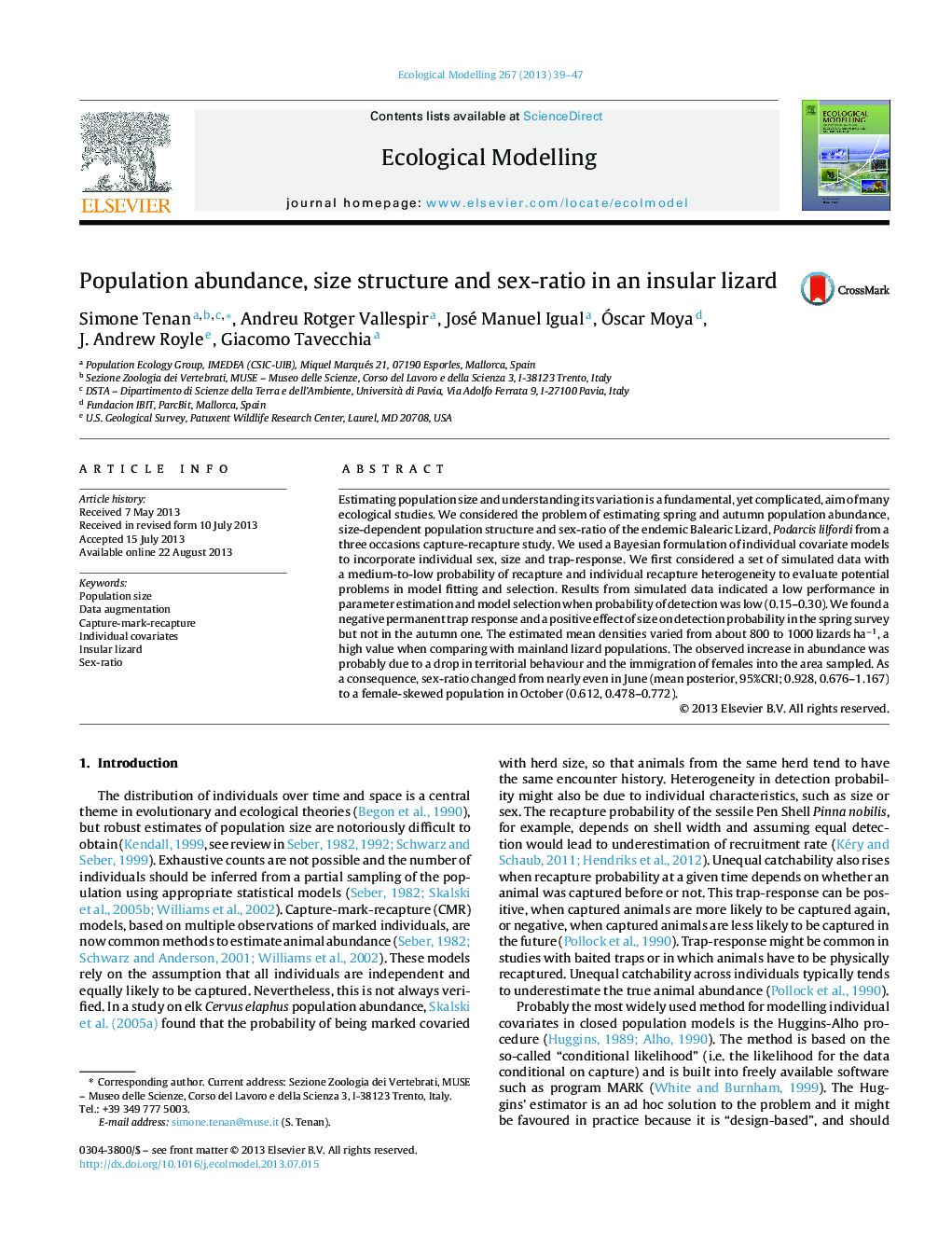| Article ID | Journal | Published Year | Pages | File Type |
|---|---|---|---|---|
| 4376054 | Ecological Modelling | 2013 | 9 Pages |
Abstract
Estimating population size and understanding its variation is a fundamental, yet complicated, aim of many ecological studies. We considered the problem of estimating spring and autumn population abundance, size-dependent population structure and sex-ratio of the endemic Balearic Lizard, Podarcis lilfordi from a three occasions capture-recapture study. We used a Bayesian formulation of individual covariate models to incorporate individual sex, size and trap-response. We first considered a set of simulated data with a medium-to-low probability of recapture and individual recapture heterogeneity to evaluate potential problems in model fitting and selection. Results from simulated data indicated a low performance in parameter estimation and model selection when probability of detection was low (0.15-0.30). We found a negative permanent trap response and a positive effect of size on detection probability in the spring survey but not in the autumn one. The estimated mean densities varied from about 800 to 1000 lizards haâ1, a high value when comparing with mainland lizard populations. The observed increase in abundance was probably due to a drop in territorial behaviour and the immigration of females into the area sampled. As a consequence, sex-ratio changed from nearly even in June (mean posterior, 95%CRI; 0.928, 0.676-1.167) to a female-skewed population in October (0.612, 0.478-0.772).
Related Topics
Life Sciences
Agricultural and Biological Sciences
Ecology, Evolution, Behavior and Systematics
Authors
Simone Tenan, Andreu Rotger Vallespir, José Manuel Igual, Ãscar Moya, J. Andrew Royle, Giacomo Tavecchia,
